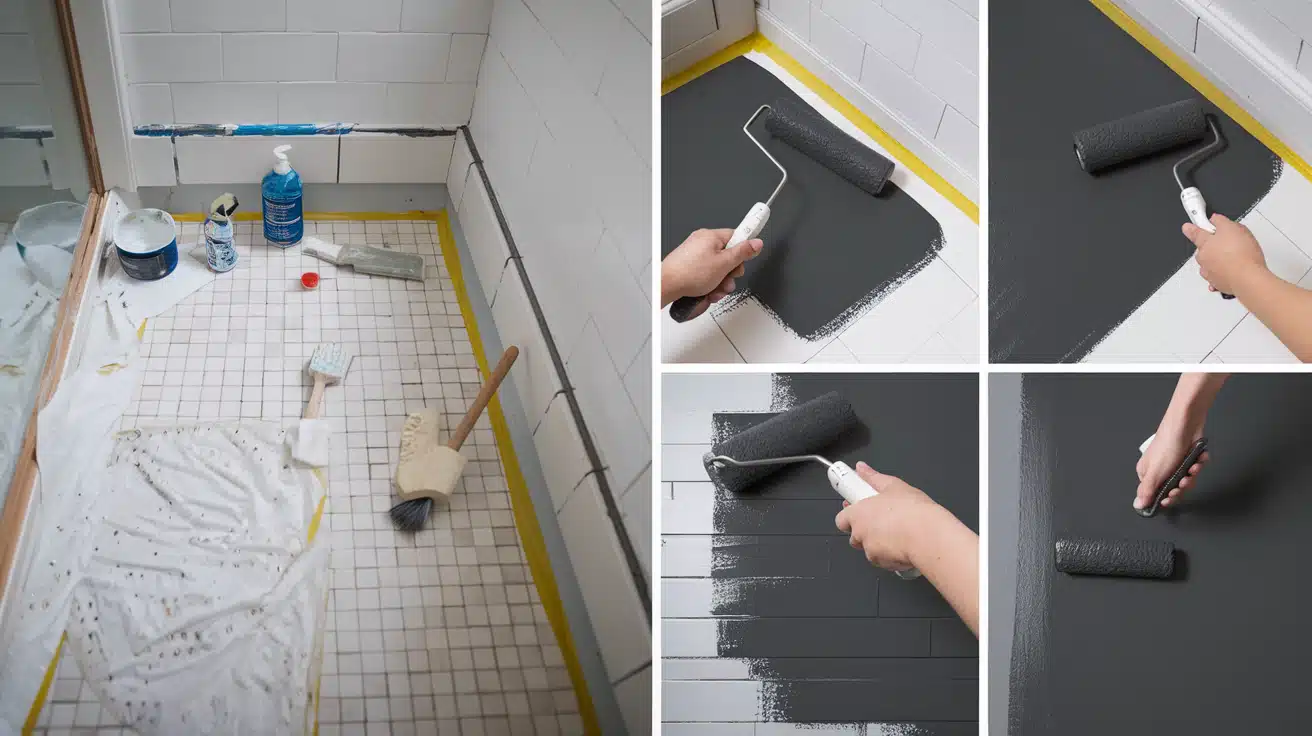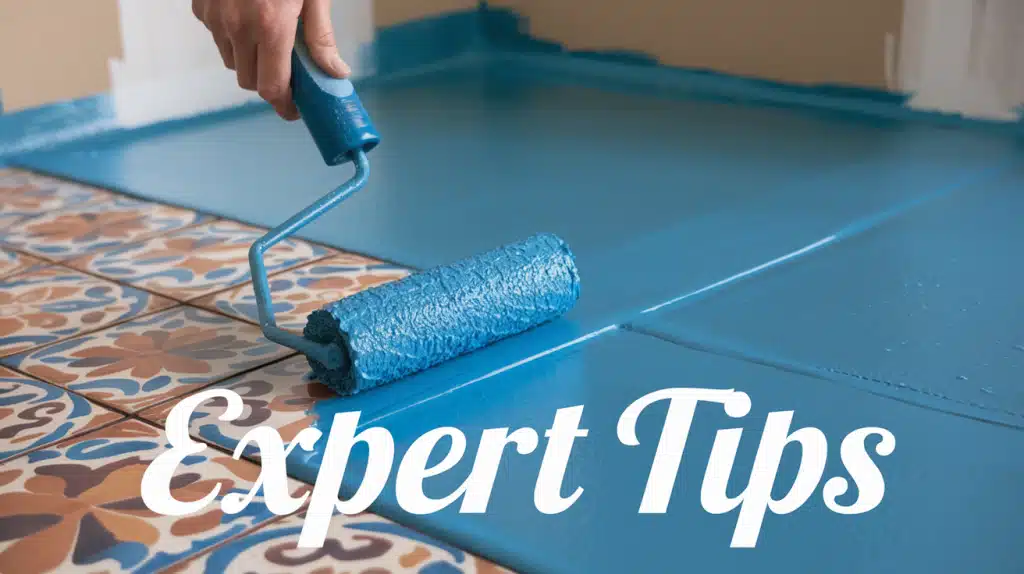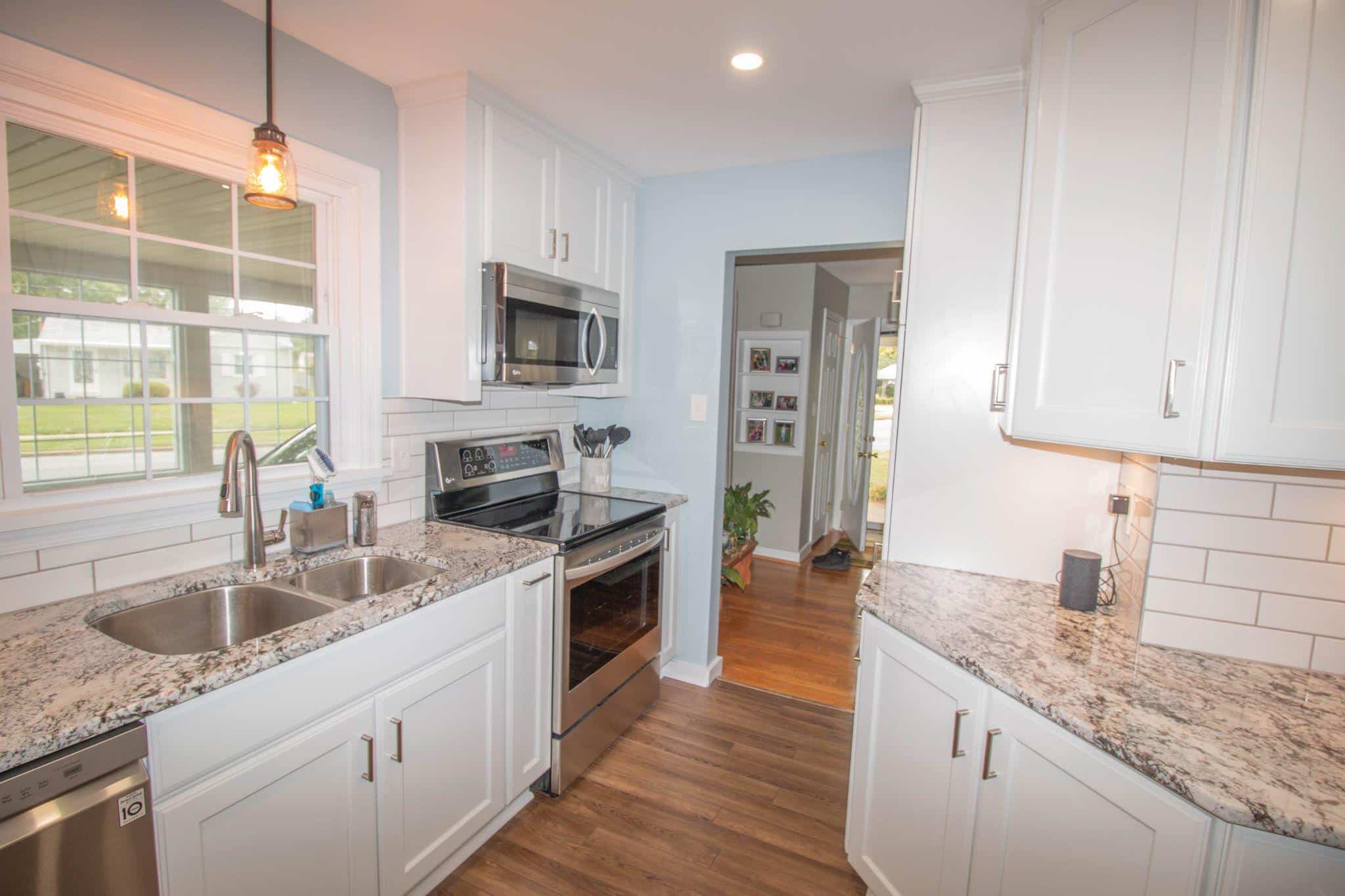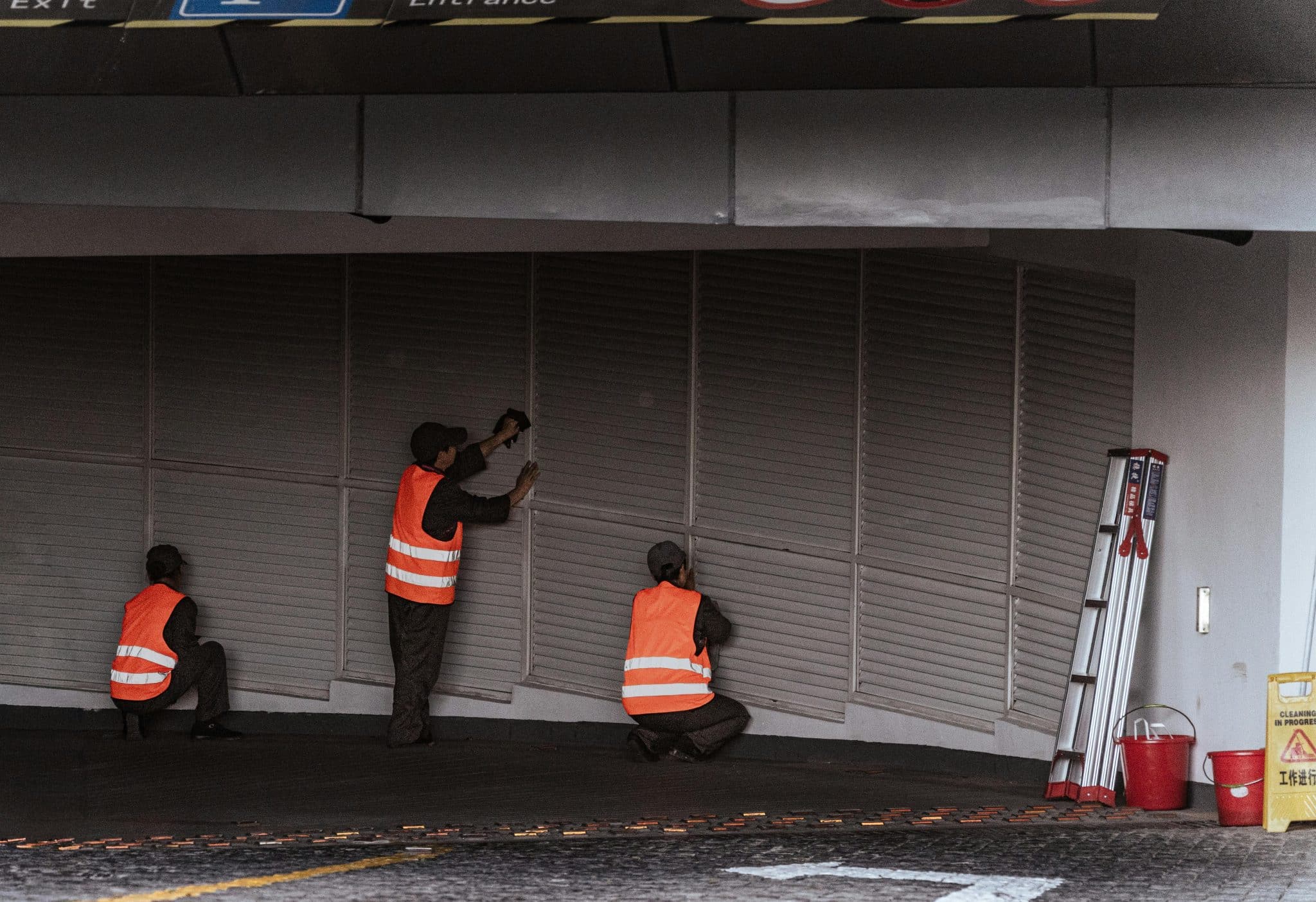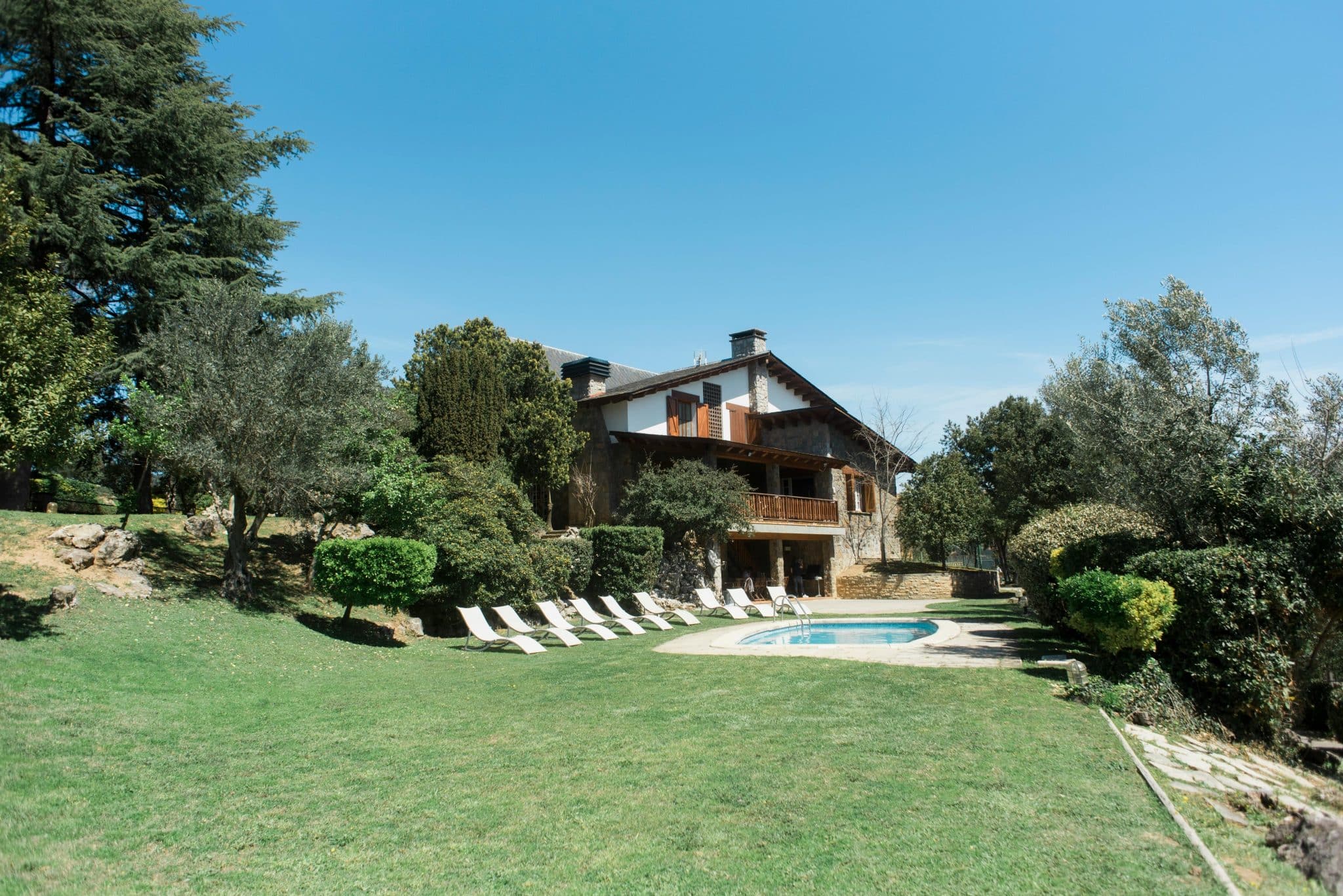Are your bathroom tiles making you frown every time you walk in? I get it – replacing them costs a lot, and ripping them out creates a huge mess. The quote I got for my bathroom tile replacement was $2,000. Ouch!
But here’s the good news: You can give those old tiles a fresh look with paint.I tried this method in my bathroom, and the results lasted without a scratch—the project cost under $100.
In this guide, I’ll walk you through the exact steps to paint your tile floors.
You’ll learn which materials work best, how to prep your surface properly, and the techniques that ensure your paint job stands the test of time.
Essential Supplies for a Successful Paint Project
| Category | Details |
|---|---|
| Paint Products | Base coat, top coat |
| Tools | Rollers (3/8-inch and 1/4-inch nap), brushes |
| Cleaning Supplies | Essential for prep and maintenance |
| Safety Equipment | Gloves, mask, goggles |
| Optional | Stencils for patterns |
How to Paint Your Tile Floor: 10 Essential Steps
Step 1: Clear the Room
- Remove all furniture, rugs, and items from the space
- Take photos of the room layout if needed for later
- Clean baseboards and check for loose tiles
Step 2: Gather Your Materials
- Paint (base coat and top coat)
- Paint rollers (3/8-inch for base, 1/4-inch for top coat)
- High-quality brushes
- Painter’s tape
- Cleaning supplies
- Safety gear (gloves, mask, eye protection)
Step 3: Clean Thoroughly
- Vacuum the entire floor surface
- Use a degreaser to remove dirt and oils
- Wipe with clean water to remove cleaning residue
- Let the floor dry completely
Step 4: Repair and Check
- Fix any loose tiles
- Fill small cracks if needed
- Test floor moisture with a paper towel
- Mark any problem areas
Step 5: Protect the Space
- Apply painter’s tape along the walls
- Cover baseboards and fixtures
- Remove or cover the toilet base
- Take out old caulk around fixtures
Step 6: Apply First Base Coat
- Start in the farthest corner
- Use a brush for edges and corners
- Roll paint in small sections
- Keep the coat thin and even
Step 7: Wait and Watch
- Allow 6 hours of drying time
- Check for missed spots
- Wear clean socks if walking on a surface
- Keep room well-ventilated
Step 8: Add Second Base Coat
- Follow the same pattern as the first coat
- Look for even coverage
- Let dry for another 6 hours
- Check results in good lighting
Step 9: Apply Top Coat
- Use a 1/4-inch roller for a smooth finish
- Work in small sections
- Apply a thin, even layer
- Keep pets and kids away
Step 10: Final Care
- Wait 24 hours before light foot traffic
- No heavy furniture for 3 days
- Wait 7 days before regular cleaning
- Keep room temperature steady
Video Tutorial
Check out this YouTube video for a detailed step-by-step tutorial on How to Paint a Tile Floor.
How to Maintain the Painted Tile Floor?
1. Daily and Weekly Care
For routine maintenance, sweeping with gentle brooms and dust mops ensures your floors stay pristine daily. When accidents happen, quickly grab paper towels to handle spills.
Move your tools with light, easy motions rather than aggressive scrubbing during cleaning. Regular mopping works best with a simple combination of mild soap and warm water.
Keep your floors in top condition by avoiding steam mops and abrasive cleaning equipment, which can damage the surface over time.
2. Cleaning Do’s and Don’ts
| Cleaning Do’s | Cleaning Don’ts |
|---|---|
| Gentle soap solutions | Steel wool or scrub brushes |
| Soft microfiber mops | Bleach-based cleaners |
| Light-touch cleaning motions | Acidic cleaning solutions |
| Regular dust removal | Abrasive cleaning powders |
| pH-neutral cleaners | Oil-based cleaning products |
3. Long-Term Care Tips
Preventive Measures
Follow these practical tips to maintain and prolong the life of your furniture and floors. Use felt pads under furniture to avoid scratches and scuff marks on your floors.
Place mats at entryways to prevent dirt and moisture from being tracked indoors. Rotate rugs regularly to ensure even wear, and check for water leaks around fixtures to prevent water damage. Keeping the room temperature steady also helps protect flooring and furniture from extreme changes.
Yearly Maintenance
For yearly maintenance, deep clean your home once a year to keep everything in top shape. Check all sealed edges for cracks or wear and tear, and look for any wear patterns on high-traffic areas.
Test the paint adhesion to ensure durability and plan for occasional re-coating.
Professional Help
Knowing when to call a professional can save you time and money. Schedule regular inspections to catch potential issues early, and always document any problems.
Keep product information on hand, including paint batch numbers, in case you need to refer them for touch-ups or repairs. This will help you stay on top of any maintenance needs and keep your home looking fresh for years.
Project Planning for Tile Floor Painting
Cost Breakdown
| Category | Items | Estimated Cost |
|---|---|---|
| Basic Supplies | Floor paint and primer | $30-50 per gallon |
| Top coat | $25-40 per gallon | |
| Paint rollers and brushes | $20-30 | |
| Cleaning supplies | $15-25 | |
| Safety gear | $20-30 | |
| Optional Items | Stencils | $15-25 each |
| Pattern tape | $8-12 | |
| Extra brushes | $10-15 | |
| Repair items | $10-20 | |
| Floor patch | $15-25 |
Time Investment
| Task | Details | Time Investment |
|---|---|---|
| Room prep | Initial setup | 2-3 hours |
| Surface cleaning | Preparing surfaces for painting | 2-4 hours |
| First coat | Applying base coat | 1-2 hours |
| Drying time | Allowing the paint to dry | 6 hours |
| Second coat | Applying the second layer of paint | 1-2 hours |
| Top coat | Final protective layer | 1-2 hours |
| Final cure | Full curing time | 7 days |
Expert Tips for Perfect Painted Tile Floors
Finding the Right Paint
When choosing paint for your floors, looking for floor-specific formulas designed to withstand foot traffic and wear is important.
Opt for moisture-resistant paints, especially in areas prone to dampness, to prevent damage over time.
Before committing to a color, test it in your space to see how it looks under your room’s lighting, which can affect the final appearance. It’s always a good idea to buy about 20% extra paint to cover touch-ups in the future.
Additionally, checking the coverage ratings of the paint will help ensure you buy the right amount.
Color Decisions
Regarding color decisions, light colors tend to show less wear, making them a practical choice for high-traffic areas. Dark colors, on the other hand, are great for hiding dirt and imperfections.
Neutral tones are a safe bet for longevity, as they last longer without going out of style. Consider your room’s lighting when selecting a color, as it can significantly affect the shade’s appearance.
Finally, ensure the paint color complements your decor style, providing a cohesive look.
Conclusion
A fresh coat of paint on your tile floor can dramatically transform your home. This budget-friendly update saves money and gives you control over the final look.
As you’ve seen, the process requires careful planning and patience, but the results are worth the effort.
Remember the key points: proper preparation, high-quality paint, and enough drying time between coats.
By following these steps and avoiding common pitfalls, you’ll create a floor that looks great and lasts.
Ready to start? Gather your supplies, set aside a weekend, and transform your space.
If you need help choosing colors or have questions about the process, comment below. Your next home improvement project is just a paint can away.

